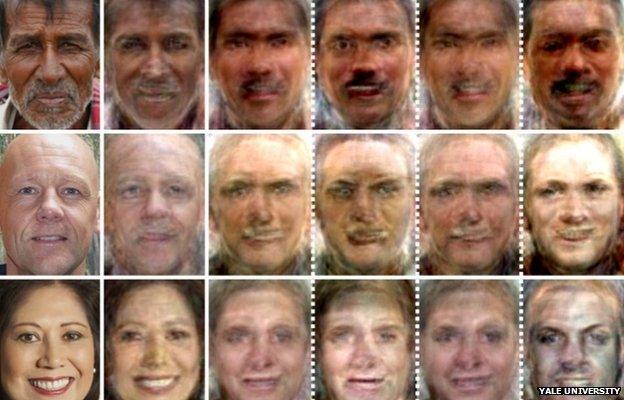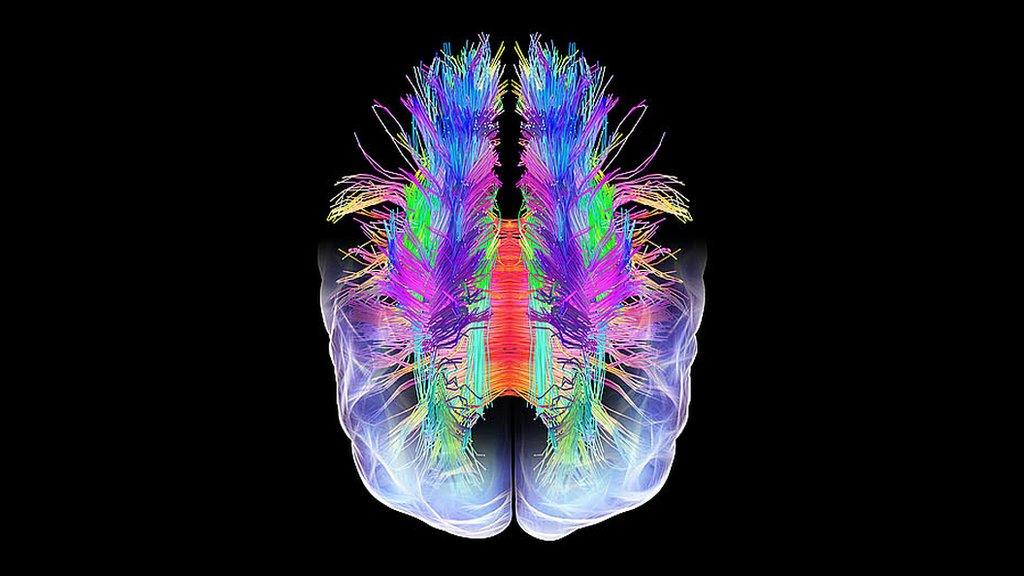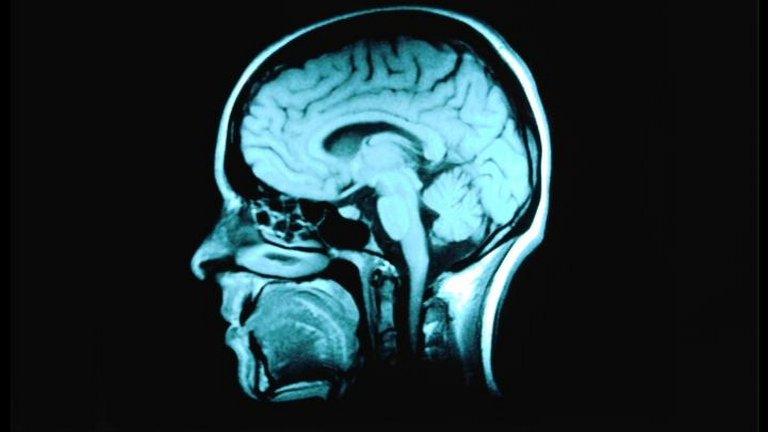The difficult task of reading the brain
- Published

Neuroscience is a fast growing and popular field, but despite advances, when an area of the brain 'lights up" it does not tell us as much as we'd like about the inner workings of the mind.
Many of us have seen the pictures and read the stories. A beautiful picture of the brain where an area is highlighted and found to be fundamental for processes like fear, disgust or impaired social ability.
There are so many stories it can be easy to be swayed into thinking that much more of the brain's mystery has been solved than is the case.
The technology is impressive but one of the most popular scanning methods - functional magnetic resonance imaging (fMRI) actually measures regional regional changes of blood flow to areas of the brain, not our neurons directly.
Researchers use it when they want to understand what part of the brain is involved in a particular task. They can place a person in a brain scanner and see which areas become active.
Lighting up the brain
The areas that light up are then inferred to be important for that task, but the resulting images and phrase "lighting up the brain" can lead to over interpretation.
Neuroscientist Molly Crockett from University College London explains that while fMRI is extremely useful, we are still very far from being able to read an individual's mind from a scan.
"There's a misconception that's still rather common that you can look at someone's brain imaging data and be able to read off what they're thinking and feeling. This is certainly not the case," Dr Crockett told the BBC's Inside Science programme.

"A study will have been done which tells us something about the brain, but what [the public] really want to do is make the leap and understand the mind."
She cites an article with the headline, "You love your iPhone, literally, external".
In this case a team saw an area previously associated with love, external - the insula - was active when participants watched videos of a ringing iPhone.
But this area also been cited as the brain's hate circuit, external, likened with disgust and as the brain's addiction centre, external.
This example highlights what many neuroscientists know, that a region of the brain can be involved in several cognitive processes.
Think of it this way, the brain is like an enormous processing machine with billions of neurons. Each cubic millimetre on a scan is believed to contain about one million neurons. And as of yet it's impossible to analyse individual neurons in living humans.
Brain reading
But when the data from the active areas are "decoded", the patterns can have some interesting results.
A team at the University of California, Berkeley, primed participants with video clips, put them in a scanner and translated the electrical signals back into clips which looked very similar to what they had watched. You can see their results here, external.
But Jack Gallant, author of the work, admits that he doesn't do "mind reading" as he doesn't really know what "the mind" is.
He says: "However, I do some "brain reading" which is simply the process of decoding the information that can be recovered from brain activity measurements.
"This is a straightforward process in theory, but any brain reading results will inevitably be limited by the quality of brain activity measurement, the quality of the computational brain models and computer resources."
Martin Dresler of the Max Planck Institute of Psychiatry in Germany, did a similar study, external to show a brain scan could translate a simple action from a participant's dream - in this case a hand movement. His participants were limited to lucid dreamers as they able to control their own dreams.
And another more recent study, external was able to reconstruct faces from brain activity.
Measuring consciousness
Widen it out further and other researchers say brain scans are also a useful tool for understanding consciousness.
A study last month in the Lancet, external found that brain imaging helped predict the likelihood a patient would recover consciousness.

Faces reconstructed from brain scan activity
Srivas Chennu from the University of Cambridge says our understanding of consciousness has advanced significantly in the last two decades "as a phenomenon emerging from networks of interacting regions in the brain".
He uses brain imaging to show how these networks are affected in altered states of consciousness, like after brain injury or sedation.
"These advances bode well for fully understanding and measuring the neural underpinnings of consciousness in the coming decade(s)." Dr Chennu says.
"I am glad to see a pattern of neuroscience where we are trying to move away from 'blobology' where we look at bits of brain that light up to a more sophisticated perspective, certainly in the consciousness arena," he adds.
It's clear that the field is progressing fast, but Dr Dresler stresses that while certain experiments can begin to interpret thought patterns visually, this is only possible on willing participants after several hours of preparation.
"The biggest difficulty is that every brain is different and you cannot infer methods on algorithms that are successful on one brain to a different brain without problems.
And it's only a very "crude form of mind reading if you want to call it that at all", he adds.
So while it's now possible to see carefully controlled patterns of thought from brain scans, reading specific and detailed thoughts and emotions from scans alone remains in the realm of fiction.
- Published20 February 2014

- Published4 April 2013

- Published5 September 2012
